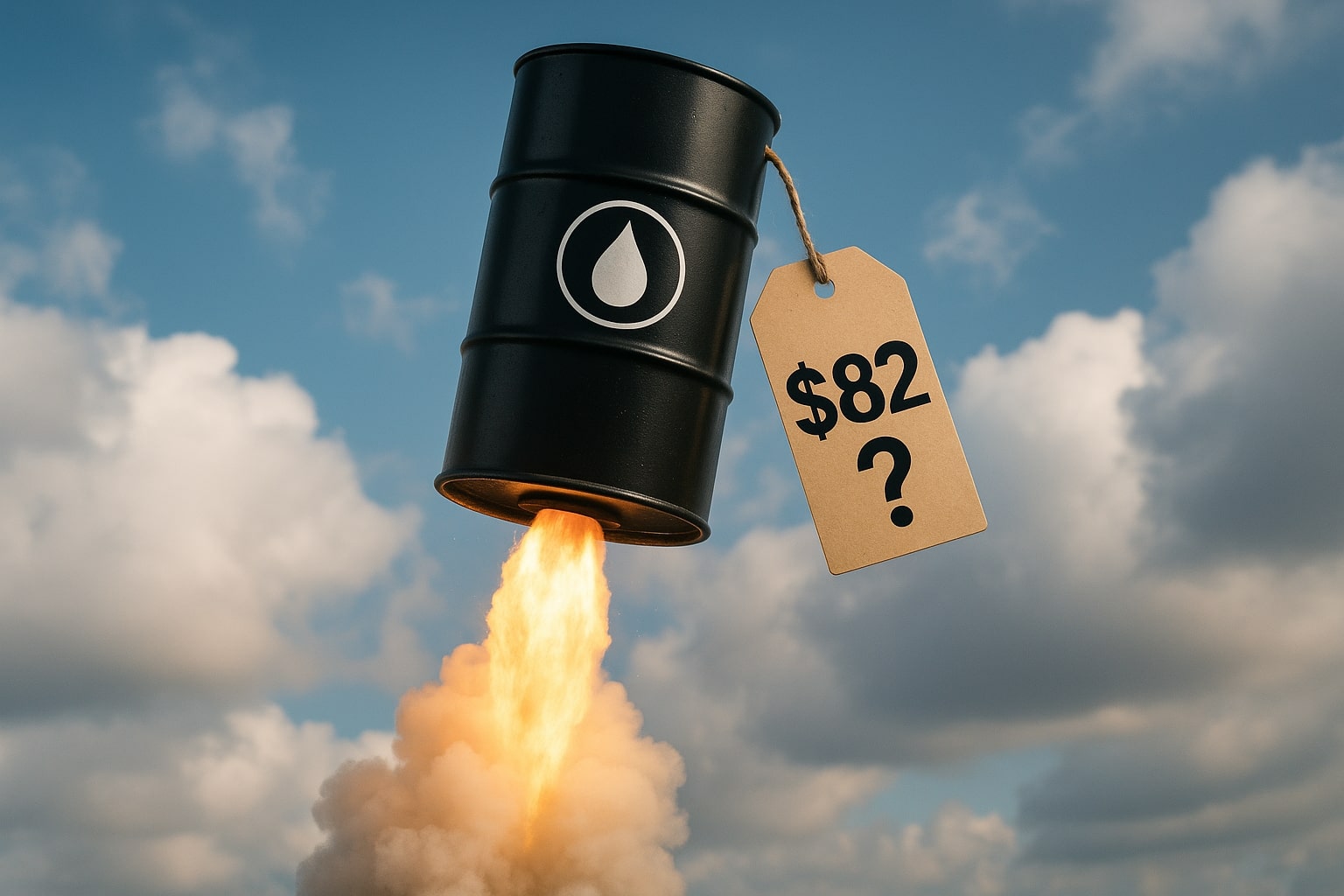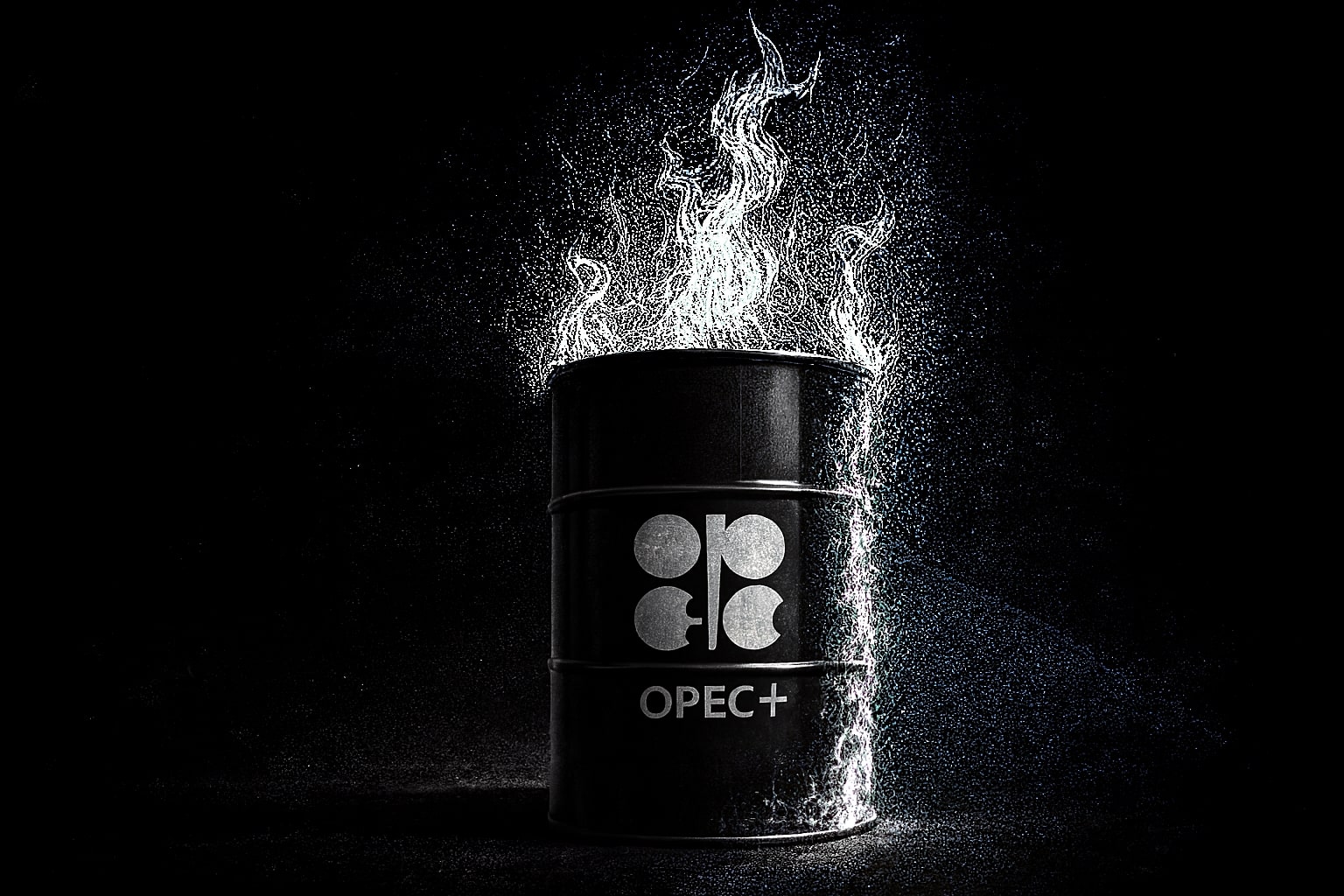Middle East Escalation Ignites WTI (CL=F) Price Spike Despite Lack of Infrastructure Damage
Crude oil futures surged as geopolitical tensions between the U.S., Iran, and Israel intensified, pushing WTI (CL=F) above $75.00 and Brent (BZ=F) near $78.25, both reaching four-month highs. WTI is up over 20% from its early May lows of $55, fueled by fears of a wider conflict and speculation about a potential shutdown of the Strait of Hormuz, through which one-fifth of the world’s oil flows. Yet despite the dramatic rhetoric and retaliatory threats, no actual oil infrastructure has been targeted so far. This disconnect between futures speculation and physical supply realities has created a high-volatility regime built more on risk premium than immediate disruption.
Crude Inventory Drawdown of 11.5M Barrels Signals Structural Tightness
The latest EIA data revealed a massive 11.5 million barrel drawdown, dropping U.S. crude stockpiles to 420.9 million barrels, or 10% below the 5-year average. This figure obliterated expectations and even beat the already bullish API forecast of a 10.1 million barrel drop. Gasoline inventories rose slightly by 200,000 barrels, while distillates gained 500,000 barrels, with daily production ticking up to 10.1M and 5.0M barrels, respectively. Despite the increases, distillate inventories remain 17% below their seasonal norm, underscoring lingering supply tightness. The four-week average product supplied has plateaued at 20.0M bpd, indicating stable demand, but subtle shifts in gasoline and diesel consumption point to regional demand fragility.
Verbal Warfare Spurs Oil Rally—But Physical Flows Remain Undisturbed
Trump’s increasingly aggressive posturing—threatening "unconditional surrender" from Iran and suggesting possible strikes on Iran’s Supreme Leader Ali Khamenei—has thrown oil markets into high alert. Iranian officials fired back with warnings that the U.S. would face proportional retaliation, including potential targeting of Kharg Island, which handles 90% of Iranian crude exports. Despite this, no barrels have been lost. Traders responded with short-term panic, sending WTI up to $75.00, but profit-taking set in as no physical infrastructure was damaged. This sets up a precarious scenario where futures markets are pricing in a premium for disruption risk, but physical flows are holding firm.
WTI Technicals Show Bullish Momentum Toward $78–$82 Resistance
From a chart perspective, WTI (CL=F) shows a strong buy-the-dip pattern, consistently bouncing above the 200-day EMA. Current support sits at $73.00, and unless that breaks, bulls remain in control. A clean move above $75.00 puts the $78.25 resistance into play, followed by a potential breakout toward $82.00. On the downside, a failure to hold the 200-day EMA could open the path to $65.00, which likely represents the ultimate downside floor barring a resolution in the Middle East or a global demand collapse.
Brent (BZ=F) Targets $82 as Market Prices War Premium, Not Fundamentals
The $75.50 level in Brent crude (BZ=F) remains the critical battleground. If bulls break through $78.25, momentum could carry the price to $82.00. Yet this rally is clearly sentiment-driven—no direct damage to oil production assets, no blockade of the Strait of Hormuz, and actual consumers in the physical market are not bidding up Dubai crude. This suggests futures traders are pricing a worst-case scenario not corroborated by actual barrels. Unless Kharg Island or Hormuz is hit, Brent could retrace back toward $70.00, aligning with the broader physical market signal.
Fed Policy Adds Complexity: Rate Hold Could Fuel Energy Rally Further
While the Federal Reserve is expected to maintain rates between 4.25%–4.50%, futures markets are starting to price in a July cut of 25bps instead of September. A dovish Fed in the face of slowing growth could fuel further commodity upside, especially in oil, which benefits from dollar weakness. If inflation eases while geopolitical risks remain elevated, oil could rally even without physical supply loss. However, if peace talks resume and demand data weakens, traders may quickly exit long positions, exposing prices to a swift correction.
Strait of Hormuz Blockade Remains the “Tail Risk” for Triple-Digit Oil
The market’s worst-case scenario remains the closure of the Strait of Hormuz, which handles about 33% of global seaborne oil trade. If this choke point is blocked, $100–$120 per barrel oil becomes plausible, especially if Iranian proxies escalate attacks on Iraq or Gulf infrastructure. While analysts from RBC Capital and ING warn of Kharg Island being a tempting target for Israeli retaliation, the White House is likely pressuring Israel to avoid triggering a full-blown regional supply shock. For now, the fear premium is dominant, but if the conflict stays contained and Hormuz remains open, prices could retreat sharply.
Buy/Sell/Hold Verdict: WTI Is a Tactical Buy With $82 Target—But Only While Fear Premium Persists
Crude oil is currently in a speculative rally mode, driven more by war headlines than fundamentals. Yet the massive inventory drawdown and fragile distillate stocks add weight to the bull case. As long as WTI (CL=F) holds above $73.00 and the Middle East remains unstable, the market favors long exposure with an upside target of $78.25–$82.00. That said, this is not a structural rally. Without real supply loss, any sign of de-escalation or a Trump pivot to diplomacy could unwind the premium. This setup makes WTI a Buy in the short term with tight stops below $72.50, but investors must stay nimble. Brent (BZ=F) offers similar upside with $82.00 resistance, but should be watched closely for profit-taking once $78.50 fails to hold. If Hormuz is hit, re-rate to $100+. If not, prepare for a $10 retracement.




















